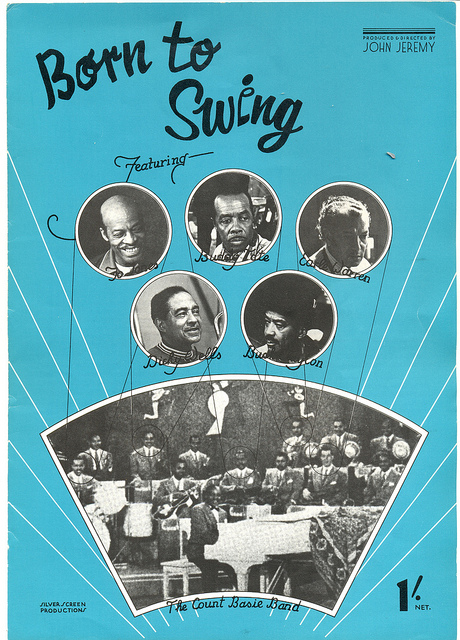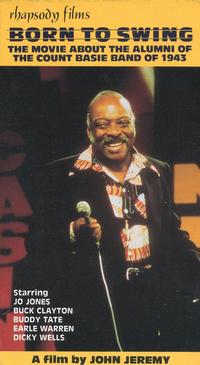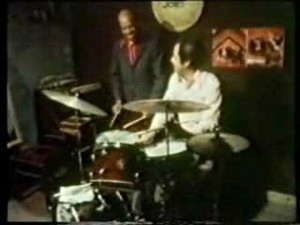From Monthly Film Bulletin, October 1974 (Vol. 41, No. 489). Postscript: Thanks (once again!) to Ehsan Khoshbakht for providing me with an extra illustration for this review. — J.R.

Born to Swing
Great Britain, 1973
Director: John Jeremy
Dist–TCB. p.c–Silverscreen Productions. p–John Jeremy. p. manager—
Angus Trowbridge. sc–John Jeremy. ph–Peter Davis, Tohru Nakamura.
photographs–Ernie Smith, Valerie Wilmer. ed–John Jererny. m–Buddy
Tate, Earle Warren, Joe Newman, Dicky Wells, Eddie Durham, Snub
Mosley, Gene Ramey, Tommy Flanagan, Jo Jones, The Count Basie
Band (1943). m. rec—Fred Miller. sd. rec—Ron Yoshida. sd. re-rec—
Hugh Strain. narrator–Humphrey Lyttelton. with–Buck Clayton, John
Hammond, Andy Kirk, Jo Jones, Albert McCarthy, Gene Krupa, Snub
Mosley, Joe Newman, Buddy Tate, Earle Warren, Dicky Wells. 1,773 ft.
49 mins. (16 mm.).
This engaging jazz film has both a general subject and a specific
one. Generally, it is about American swing music of the past;
specifically, its main focus is six veterans of Count Basie’s band in
the present. Interspersed with a 1943 clip of the Basie band inspiring
some athletic dancers are album covers, flurries of sheet music,
neon signs, and a string of short reminiscences: by Andy Kirk,
about his stint with the Eleven Clouds of Joy; Snub Mosley, about
New York in the Thirties; the doorman at Jimmy Ryan’s, about
52nd Street; Gene Krupa, mainly about himself. Then comes jazz
producer John Hammond, who recalls hearing Basie as a second
pianist in Benny Moten’s band, thereby leading us into the film
proper — the contemporary lives of six Basie alumni, intercut with a
studio session in which five of them participate. These six lives are
disparate indeed, and the film runs a brisk relay from one to the
next. Dicky Wells lives in Harlem and works as a messenger on
Wall Street (some clever crosscutting from trombone slide-work in
the session to mail-sorting on the job). Buddy Tate, appreciably
more affluent, is seen at his country home chatting about old times
and current booking dates. Buck Clayton explains his abandonment
of the trumpet on doctor’s orders, and is seen as a visitor at Joe
Newman’s trumpet class in Harlem; a little lecture by Newman
about tone explodes into a beautiful demonstration he gives at the
session. Next comes Jo Jones, followed into his drum shop where
he is observed teaching fancy percussion tricks to novices. Finally
we move back again from security to scuffling, and hear Earle
Warren describe a current commercial job dictated by a family
illness. Only when we follow Warren back to the studio reunion does
the film settle down to some extended music, and the effect is
admirably climactic. John Jeremy has a way of editing to the music
that proves he likes to listen to it. But with so much social, cultural
and musical material to get through in less than an hour, one
occasionally regrets the scatter-shot pace, the bite-size definitions
of style and milieu, and the necessity of paring down the historical
context to a narrow abbreviation. Discussing Thirties swing
inevitably leads to Basie, but virtually to omit Lester Young and his
influence from the survey is a bit like discussing Paramount over the
same period by centering on Lubitsch and leaving out Sternberg.
JONATHAN ROSENBAUM



